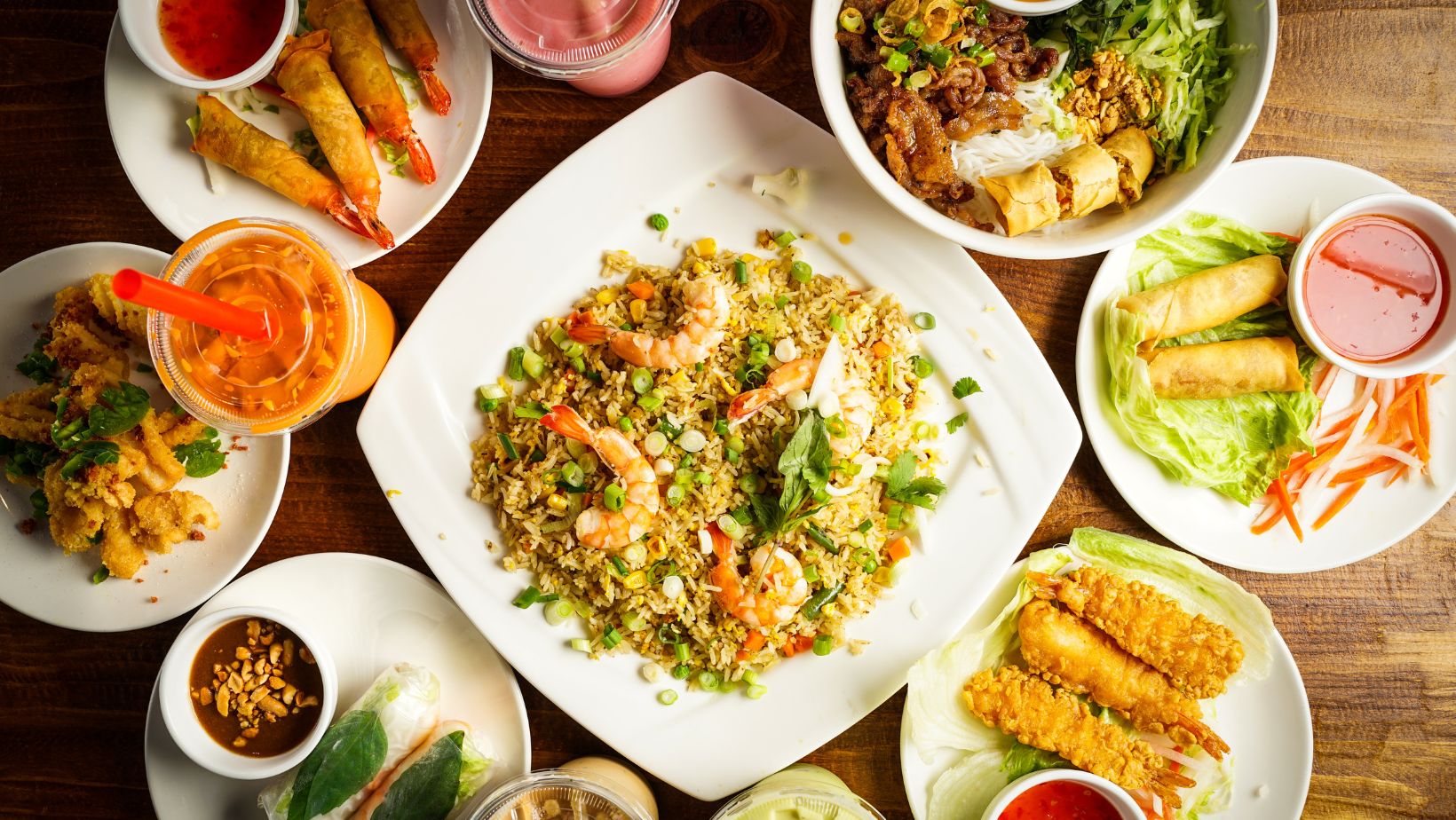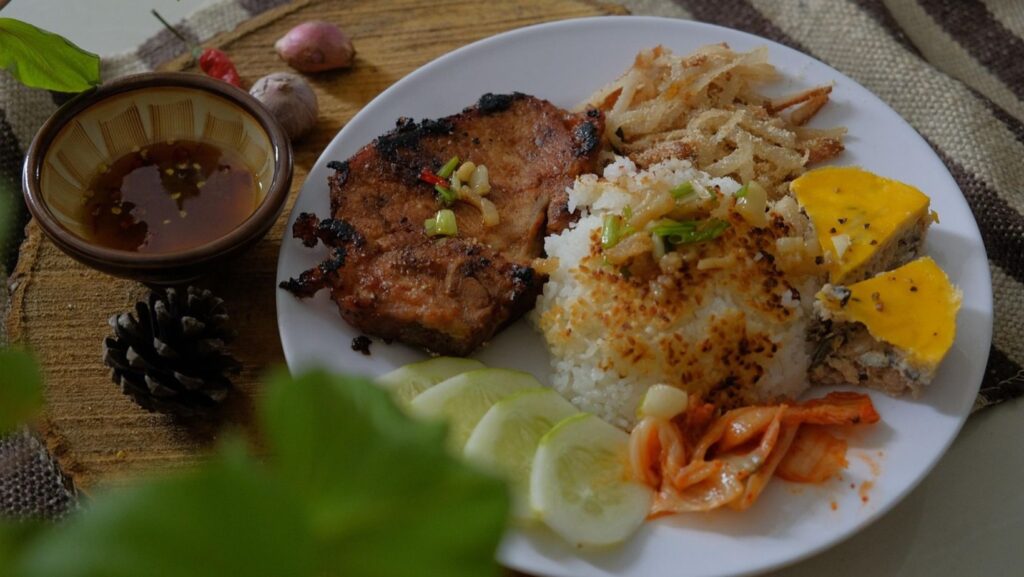Vietnamese cuisine developed its beloved rich and complex flavors through interactions with other cultures. French colonization turned out to be one of the most significant unexpected influences on Vietnamese cuisine.
The fusion between French and Vietnamese cultures resulted in an exciting culinary transformation that remains influential in Vietnamese cooking traditions to this day.
The French colonial era brought profound changes to Vietnamese cuisine while also transforming its political and social structures. The union of traditional Vietnamese practices with European culinary methods birthed an exceptional and unprecedented food culture.
Key Ingredients You’ll Discover:
- How Colonial France Shaped Vietnamese Kitchens
- The Birth of Iconic Fusion Dishes
- French Techniques in Vietnamese Cooking
- Regional Variations of French Influence
- Modern Vietnamese Cuisine’s French Connection
How Colonial France Shaped Vietnamese Kitchens
Vietnam experienced French colonization from the late 1800s until 1954 when French cultural influences created significant changes in Vietnamese food traditions over nearly one hundred years. The French occupation brought previously unknown ingredients that established themselves as essential elements in Vietnamese cuisine.
Vietnam had no dairy products before the French colonization began. The arrival of butter, cream, and milk created entirely new opportunities for culinary exploration. The arrival of baguettes proved even more transformative because they became the essential element for Vietnam’s most famous sandwich.
Research shows that vegetables such as onions, potatoes, and carrots have become regular ingredients in Vietnamese cuisine after being introduced by French colonists. These ingredients have been so thoroughly integrated into food related Vietnam culture that many Vietnamese people don’t even realize their foreign origins.
This wasn’t just about new ingredients. French colonists introduced completely distinct cooking practices and food preparation methods. The Vietnamese culinary repertoire expanded with sautéing methods and the creation of roux and complex sauces, which cooks modified to match regional flavors and resources.
The Birth of Iconic Fusion Dishes
The iconic Vietnamese sandwich known as bánh mì stands as the ultimate symbol of French-Vietnamese culinary fusion because it has become an international sensation.
The essential nature of bánh mì embodies an ideal blend of distinct cultural influences.
- The Vietnamese-inspired baguette remains light and crispy thanks to the addition of rice flour.
- Traditional Vietnamese pickled vegetables and herbs
- French-inspired paté, mayonnaise, and cold cuts
Originating from the needs and ingenuity of the colonial era, this sandwich grew into one of the most internationally recognized Vietnamese dishes.
But bánh mì is just the beginning…
The Vietnamese beef stew called bò kho takes inspiration from the French beef bourguignon yet blends in lemongrass and star anise with local spices to develop a unique Vietnamese dish. The culinary technique reflects French origins yet maintains unmistakable Vietnamese flavors.

Vietnam’s café culture stands as a crucial part of its modern identity because it represents a colonial legacy that remains deeply integrated with Vietnamese life. Although the French brought coffee to Vietnam during the 19th century, local people embraced the beverage by inventing cà phê sữa đá which combines iced coffee with condensed milk into a sweet yet potent drink that suits the region’s tropical conditions.
French Techniques in Vietnamese Cooking
French cuisine left a lasting impact on Vietnamese food by introducing Southeast Asia to several innovative cooking techniques.
French culinary practices brought the technique of slow cooking meats to Vietnamese cuisine to create tender dishes. Cooking methods such as braising and simmering underwent adaptation to work with regional Vietnamese ingredients. The result? The dish thịt kho (caramelized pork belly) received enhanced flavor profiles and varied textures.
Vietnamese chefs acquired knowledge about making reductions and intricate sauces through lessons from their French colleagues. The French culinary approach brought techniques of flavor building through reduction and layering to Vietnamese cuisine which traditionally relied on fish sauce (nước mắm) as its primary flavor enhancer.
French emphasis on culinary presentation had a profound influence on the serving methods of Vietnamese food. Before French culinary practices became influential in Vietnam people typically shared meals family-style. The French approach to dining brought the practice of serving meals in multiple courses with visual presentation as essential components of the culinary experience.
High-end Vietnamese restaurants today best showcase the focus on presentation through their French-Vietnamese fusion dishes, which have reached fine dining standards.
Regional Variations of French Influence
The French culinary impact varied across Vietnam’s different regions. Distinct regional variations emerged from the varying levels of French colonial influence throughout Vietnam.
Traditional Chinese elements remained dominant in Northern Vietnamese cuisine (around Hanoi) which also included subtle French influences. The dishes served here contain less sweetness and show higher amounts of black pepper compared to chili.
French culinary methods had the least impact on Central Vietnamese cuisine in the Hue region which preserved its intricate and spicy culinary heritage. As the historical imperial capital, this region preserved close connections to traditional Vietnamese cooking methods.
French influence stands out most prominently in Southern Vietnamese cuisine around Ho Chi Minh City. This region showcases the most distinct fusion dishes while fully adopting French cooking techniques. In the south Vietnamese food style the flavors are sweeter and the use of dairy and wheat products is common.
Vietnam’s culinary landscape forms a captivating map where the extent of French influence reveals the historical footprint of colonialism throughout the nation.
Modern Vietnamese Cuisine’s French Connection
Although Vietnamese food culture keeps changing today, French culinary influence remains a clear and persistent element. Contemporary Vietnamese chefs incorporate their dual culinary heritage into new creations that honor both traditional influences.
High-end restaurants in Vietnam and internationally feature chefs who merge classic French-Vietnamese fusion dishes with modern cooking techniques. The ongoing culinary dialogue between French and Vietnamese traditions persists as chefs create dishes such as duck confit spring rolls and pho with clarified consommé.
French influence permeates Vietnamese dining culture beyond particular recipes. The lively café scene in Vietnam that features sidewalk seating and unhurried ambiance strongly mirrors the traditional café culture found in Paris. Understanding the full scope of French influence requires recognition of the social aspect just as much as the culinary elements.
And here’s something fascinating…
Despite globalization and fresh influences, Vietnam is experiencing the French-Vietnamese connection, which retains its unique significance. The French culinary impact on Vietnamese food culture stands as a permanent element unlike current food trends which disappear over time.

Vietnamese people took foreign elements and redefined them to reflect their unique cultural identity.
Enduring Legacies in Every Bite
The French impact on Vietnamese food culture represents an active legacy that transforms as new generations of cooks and chefs develop their own culinary interpretations.
The French colonization period brought about a culinary exchange that resulted in some of Vietnam’s most cherished dishes despite its contentious historical background. The combined French-Vietnamese culinary traditions demonstrate valuable innovation emerging from a difficult historical era.
Food enthusiasts will find that the historical background enhances their comprehension of Vietnamese dishes. When you enjoy a crispy bánh mì sandwich or drink Vietnamese coffee, you taste the unique combination of two powerful culinary traditions.
This culinary relationship illustrates how Vietnamese food culture develops by exchanging ideas and adapting techniques while creating innovative dishes that teach lessons as complex as the food itself.
Key Takeaways to Savor
Vietnamese cuisine developed new elements through French culinary practices.
- The French influence introduced bread as well as dairy products and specific vegetables to Vietnamese cuisine.
- Iconic Vietnamese fusion dishes such as bánh mì and bò kho emerged during French culinary influence.
- New cooking techniques adapted to local ingredients
- Regional variations reflecting colonial presence intensity
- Continuing inspiration for modern Vietnamese chefs
A complex culinary evolution led to the creation of one of the world’s most thrilling cuisines which has gained worldwide appeal without losing its unique essence and historical background.



